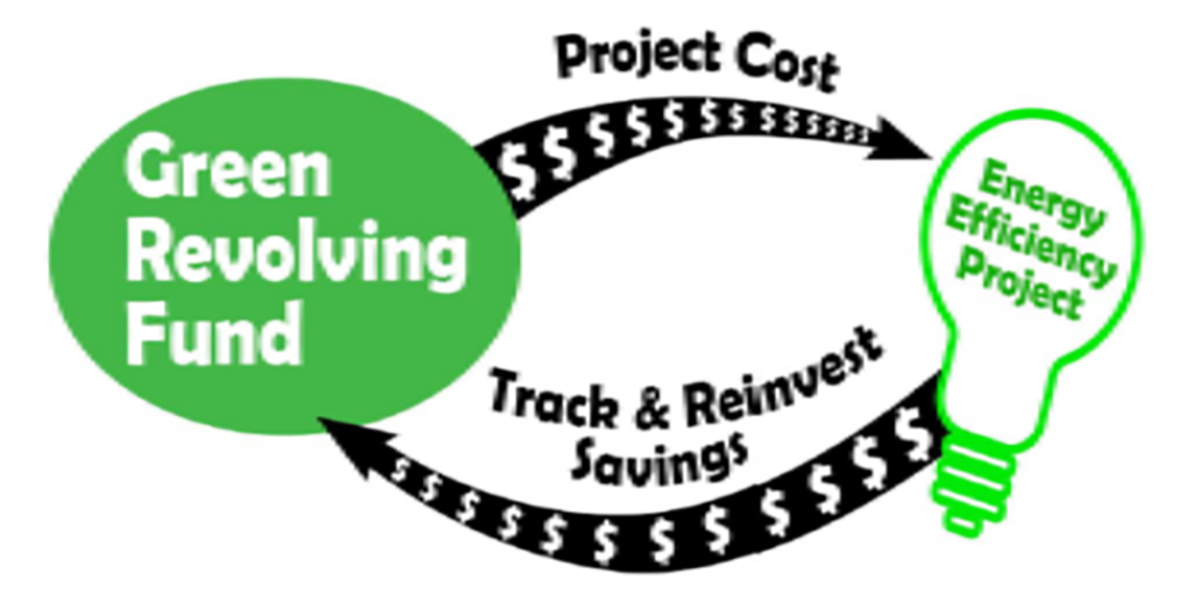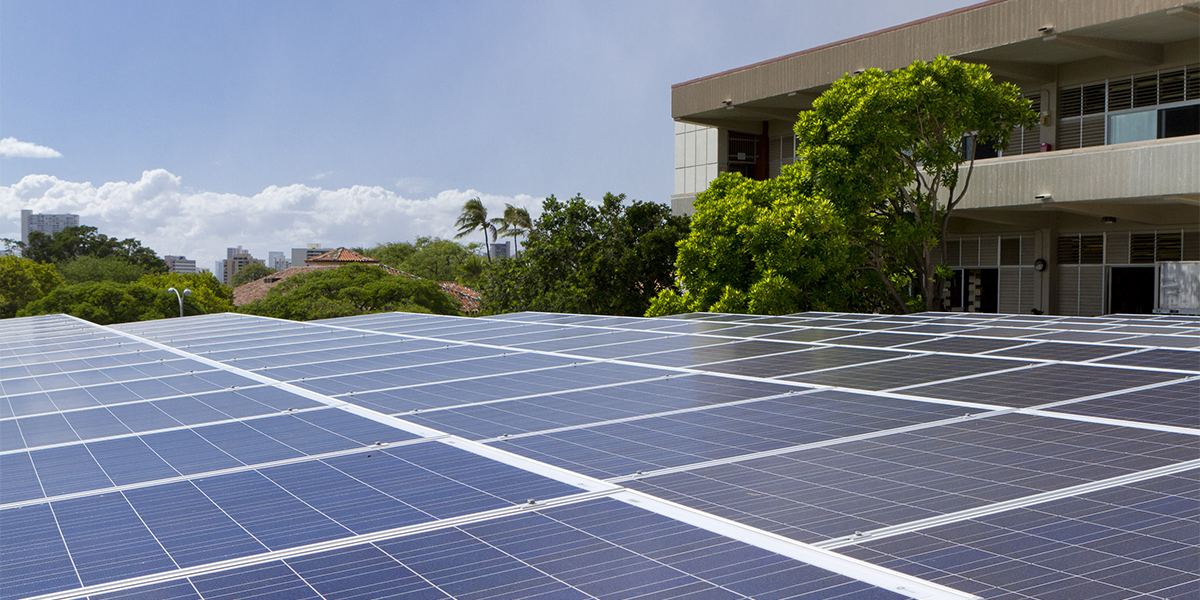The University of Hawaiʻi at Mānoa Green Revolving Fund is an internal investment fund that was created to reinvest cost savings and rebates from energy efficiency projects. The funds invested are used to fund projects that create additional savings while moving the campus to a more sustainable model of energy efficiency.
For UH, the Green Revolving Fund currently plays an important role in moving the university toward its goal of zero carbon emissions by 2035. With philanthropic investments, this innovative program with clear energy efficiency outcomes will be ready to tackle more projects and quickly and directly lower UH’s use of fossil fuel.
Universities across the U.S. use revolving funds to provide financing upfront for energy efficiency upgrades and use the savings from the lower operating expenses, as well as rebates and other philanthropic sources, to replenish the fund.
Together, we can achieve these goals more quickly. Please consider joining other individuals and corporate donors by making your gift to support the Green Revolving Fund.
Net-zero deadline
 To date, the UH System has achieved 7.08% toward net zero, leaving 92.92% to be done in less than 13 years.
To date, the UH System has achieved 7.08% toward net zero, leaving 92.92% to be done in less than 13 years.
Energy efficiency projects at UH Mānoa have the potential to save millions of dollars each year in energy costs.
The campus is closing a second phase of its Strategic Energy Management Master Plan, and entering a third phase, which will involve installing more solar photovoltaic panels on buildings around the campus. Other energy efficiency projects include LED lighting replacements, HVAC efficiency improvements, battery storage, water efficiency measures and waste management.
The Mānoa campus is currently going through an exterior lighting retrofit with energy-efficient LED lighting that will use 64% less energy than the current light High-Intensity Discharge light fixtures and have a longer lifespan and require less maintenance. Another recently completed project installed a solar PV shade structure atop the lower campus parking structure.
Difficult task ahead
Taking the Mānoa campus to net zero will be hard: There are more than 300 buildings; half are multiple-story, fully air-conditioned; 50 of those run air conditioning 24 hours per day, seven days per week.
By shifting more of the electrical load to solar PV, conservative estimates show that UH Mānoa can quickly reach 56% and be on track to attain that ambitious — but critical — net zero.
The estimated cost to build all of the planned solar PV projects on campus is $360,000. UH expects the state Legislature may provide some of the funding, but there is no certainty as how much or even if that will happen, as the clock ticks toward 2035.
A gift to the Green Revolving Fund helps UH Mānoa make progress toward that goal and is a gift in perpetuity because the project repays the fund.
Experience that counts
 Miles Topping has been director of Energy Management at the University of Hawaiʻi since 2016, responsible for system-wide leadership, planning, development, coordination and implementation for the strategic energy plan and program that supports short- and long-range sustainability, resiliency, and net-zero energy objectives for the University of Hawai'i.
Miles Topping has been director of Energy Management at the University of Hawaiʻi since 2016, responsible for system-wide leadership, planning, development, coordination and implementation for the strategic energy plan and program that supports short- and long-range sustainability, resiliency, and net-zero energy objectives for the University of Hawai'i.
Topping previously worked as a photovoltaic engineer with RevoluSun and has more than 20 years of experience in engineering as a systems engineer at BAE Systems, and before that, Boeing, and designing avionics displays for commercial jetliners and electronic control for rocket propulsion systems.
Topping holds a bachelor’s degree in electrical engineering from UH Mānoa.
Make a Gift
Questions? / More Information
If you would like to learn how you can support UH students and programs like this, please contact us at 808 376-7800 or send us a message.
